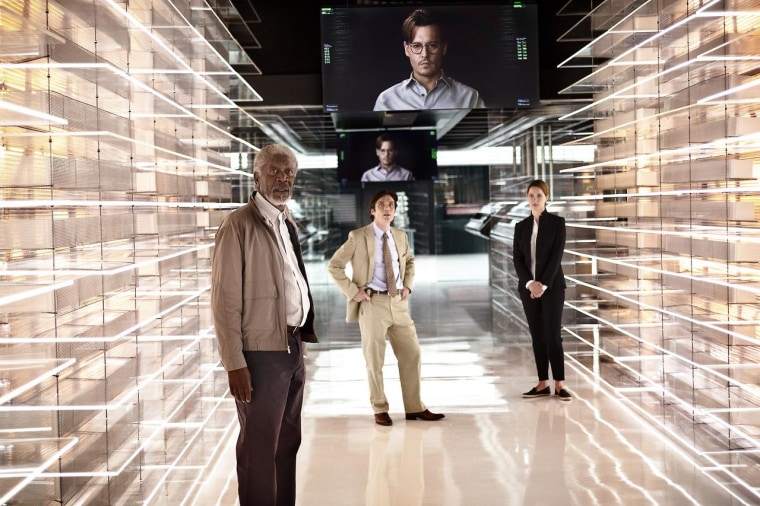In the new science-fiction thriller “Transcendence,” Johnny Depp uploads his mind to a powerful computer, melding his consciousness with artificial intelligence in a scenario many refer to as “the singularity.”
Far-fetched? Yes, but so is the idea of a brooding Depp as an awkward neuroscientist. That doesn’t mean people are not trying to make it happen in real life, including Russian billionaire Dmitry Itskov, who makes “immortality” an explicit goal of his 2045 Initiative.
Two researchers who consulted on “Transcendence,” both professors of electrical engineering and neuroscience at the University of California, Berkeley, are not sure that is an attainable goal, but that does not mean it’s not worth pursuing.
“Will what we see in the movie be happening in 30 years? I would have to say no, because we don’t even understand what consciousness is,” Jose Carmena told NBC News.
“To upload the mind, you would have to build technology that would let you interface with the brain,” added his colleague, Michel Maharbiz. “The race to do try and do that could motivate a lot of technology along the way, and that could potentially help a lot of people.”
In other words, before we get a virtual Johnny Depp, we are going to need to really understand how the brain works — a goal that a lot of people have put a lot of money behind.
In April 2013, President Barack Obama announced the BRAIN Initiative, a $232 million collaboration between the government and private companies to map the human brain.
People with disabilities could benefit the most from this kind of research. Zac Vawter, a Seattle-area man who lost his lower right leg in a motorcycle accident, made headlines when he was outfitted with a prosthetic leg that he could control with signals from his brain.
Other scientists are looking into whether people like Stephen Hawking could communicate with the outside world without moving a muscle — something made easier with technology that can measure brain activity without the need to connect electrodes to someone’s scalp. That same type of technology has also been used for the less noble cause of wriggling robotic cat ears.
Carmena and Maharbiz spent 10 hours in Los Angeles, followed by two more visits, going over the science in the script with "Transcendence" director Wally Pfister. This being Hollywood, plenty of the scenes include a bit of creative license, including one (spoiler alert!) involving a popular science-fiction trope called “grey goo,” a mass of self-replicating nanobots that can heal people and create matter out of nothing in a matter of seconds.
While that might be impossible, nanotechnology in general, which extends to the fields of chemistry, biology, physics, materials science and engineering, is thriving in labs across the country.
“It’s progressing fairly rapidly,” Maharbiz said. “The ability to engineer incredibly small machines down at the nanoscale is being pursued very aggressively by lots of people.”
The hope is that eventually nanobots could be made to attack cancer and other diseases. It's an ambitious goal, much like mapping the billions of neurons in the human brain. But it could result in much greater things than a fun night out at the movies.
“In 50 years, the landscape will be very different, and you will see very advanced ways of connecting to the brain,” said Maharbiz. “That is the primary benefit from people who have science-fiction goals in mind.”
